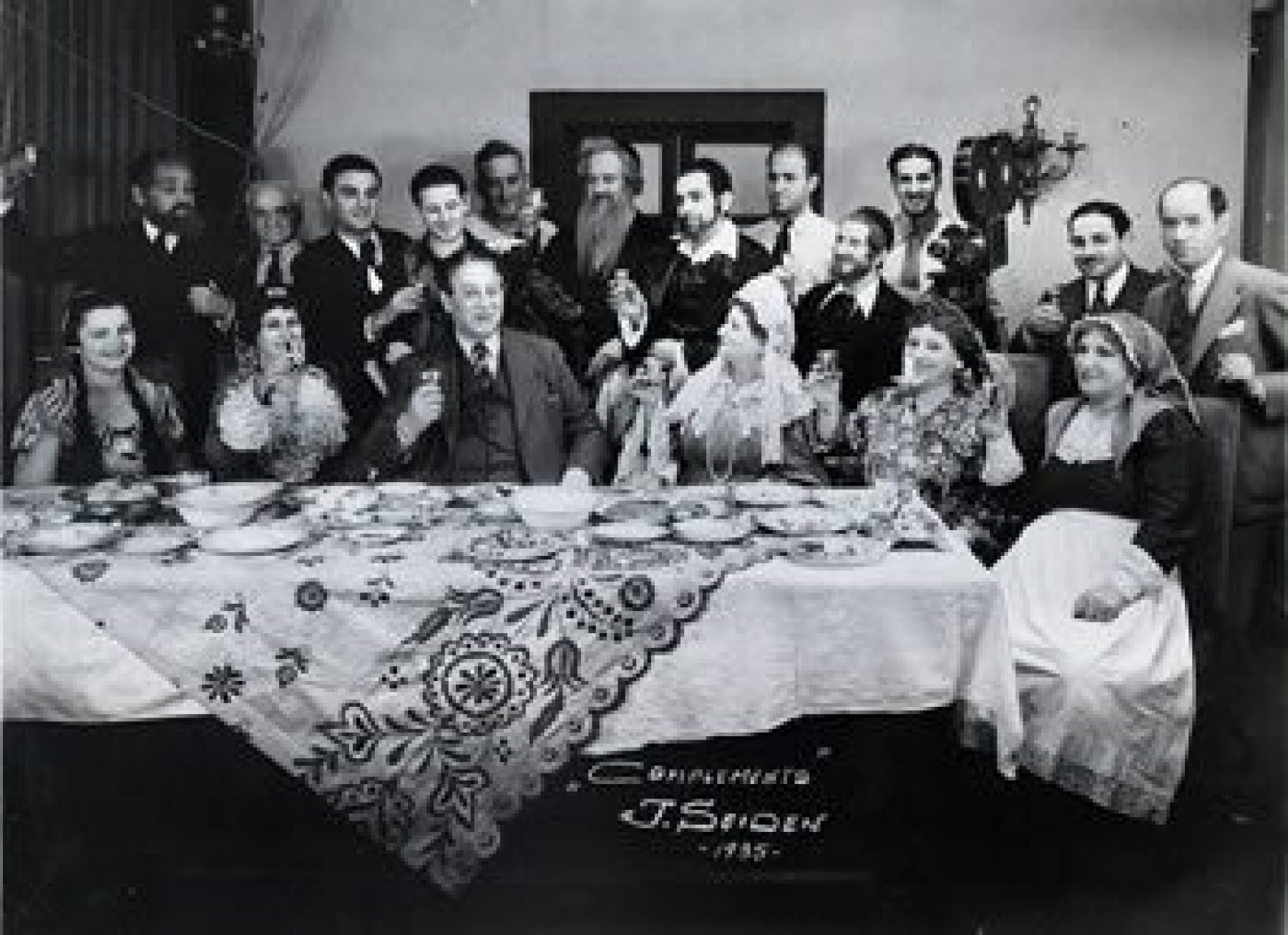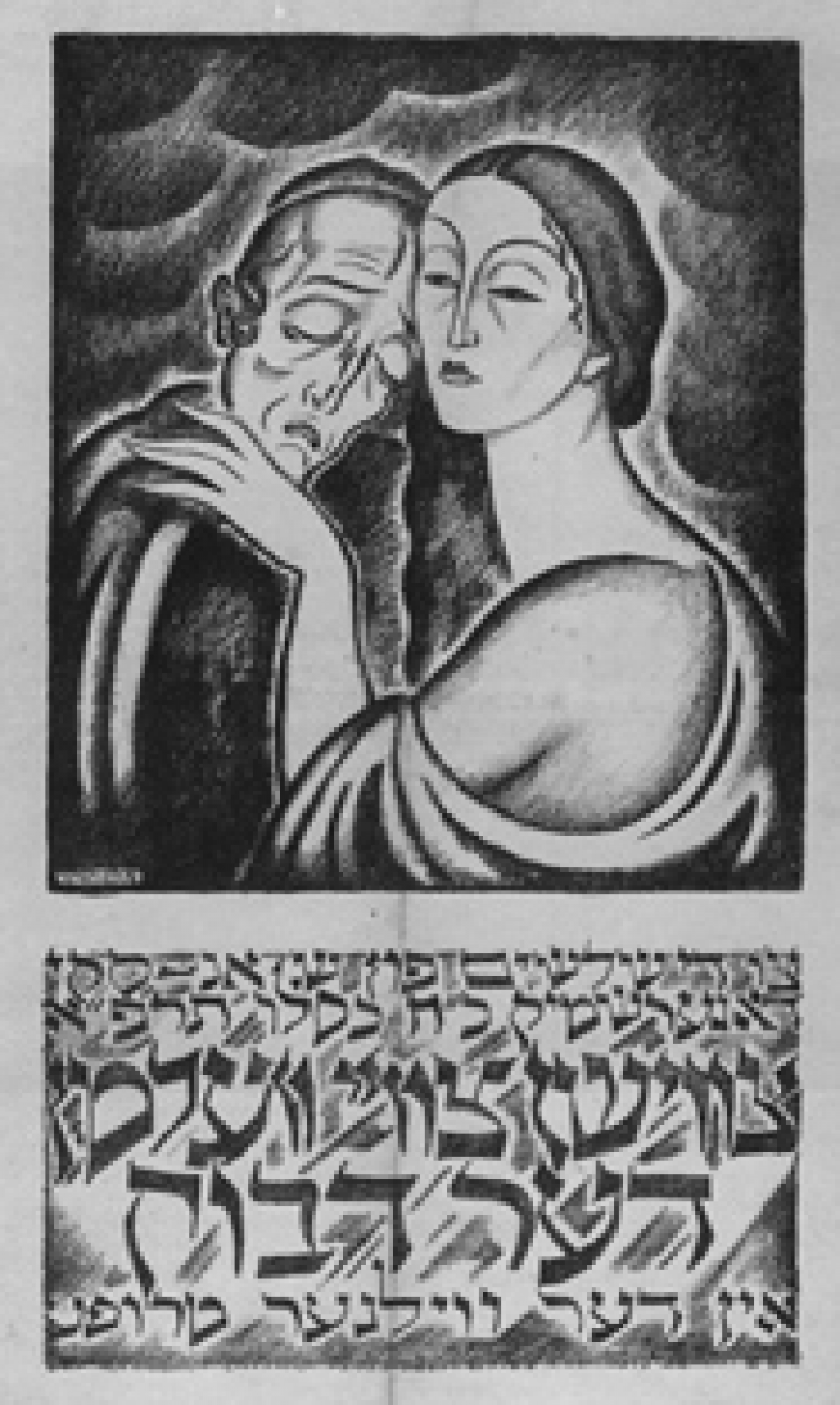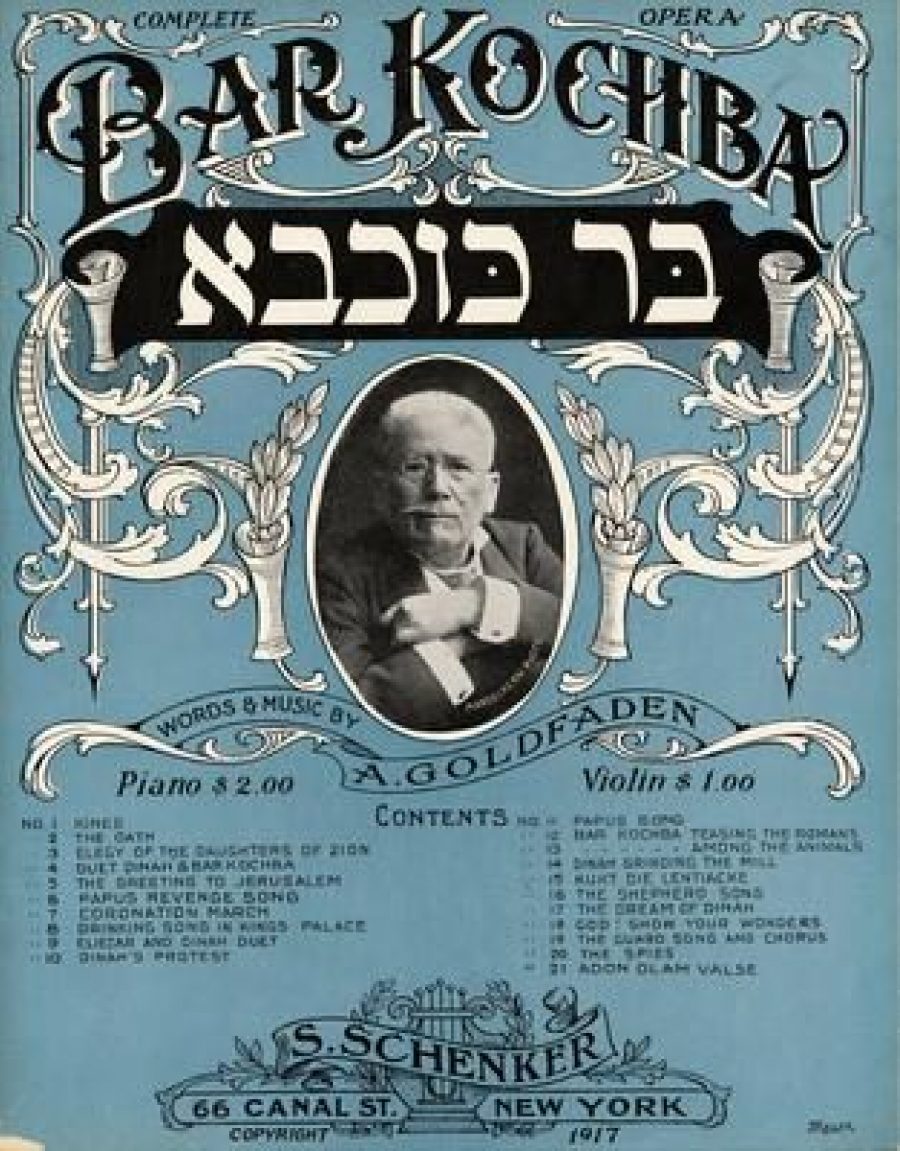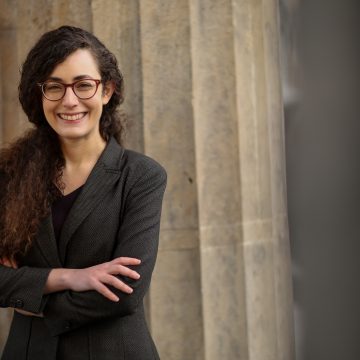
Scene from Der yidisher kenig Lir (The Yiddish King Lear). Image: The National Center for Jewish Film
The Yiddish Dramatic Repertoire: A User’s Guide
Joel Berkowitz, Sonia Gollance
The narrator of Thomas Wolfe’s 1935 story “Only the Dead Know Brooklyn” begins his snarky account of an encounter with a man exploring the borough by proclaiming, “Dere’s no guy livin’ dat knows Brooklyn t’roo an’ t’roo, because it’d take a guy a lifetime just to find his way aroun’ duh goddam town.” Replace “Brooklyn” with “the Yiddish dramatic repertoire,” and you end up with part of the rationale for our new initiative, Plotting Yiddish Drama, a searchable, interactive database of the plot synopses of Yiddish plays.
The Digital Yiddish Theatre Project itself came about to help bring attention to the richness and complexity of Yiddish theatre and drama. Over its centuries-long, international history, Yiddish drama has tackled all the major challenges modern Jewry has faced, including the tension between tradition and modernity; political movements within and beyond the Jewish community; changes in family structures and gender roles; violent cataclysms, including wars and pogroms; mass emigration; and debates over the creation of a Jewish nation-state. Familiarity with Yiddish drama therefore serves as an important tool to better understand Jewish history and culture. And many Yiddish plays deserve our attention for aesthetic reasons as well. There’s much, much more to the repertoire than The Dybbuk, The Golem, and God of Vengeance.

A placard advertising the 1920 premiere of the Vilna Troupe’s Der dibuk (The Dybbuk).
Enter “Plotting Yiddish Drama” (PYD), a new initiative you can begin to sample now, which will gradually expand in terms of both the content it covers and the tools we create to help us better understand connections among many different Yiddish plays. At PYD’s core are searchable plot synopses of Yiddish plays. We’ve gotten you started with just a dozen: all of them historically important, but with no suggestion that they are the twelve most important Yiddish plays. Sonia Gollance, PYD’s Managing Editor, working closely with several other DYTP members, will steadily add to the database of synopses. Over time, we plan to build PYD into an interactive, mappable, searchable database containing the synopses of hundreds of Yiddish plays that offer windows not only into the details of specific dramas, but also of the richness, complexity, and variety of the Yiddish dramatic repertoire as a whole.
The synopses are just the start, however, for the texts of these summaries serve as both a tool in their own right and a means to an end. Putting them online rather than in book form allows us to continually expand the database over time, rather than limit it to some arbitrary and finite number of summaries. The online format also allows us to tag key terms to help users search the texts, and the larger the database grows, the more useful those tags will be.
Let’s say you want to identify plays featuring certain types of characters, or revolving around key themes. Plays in the PYD database are tagged to make such searches both easy and meaningful. Over time, if users want to find plays about, say Jewish communal politics, or featuring grandmothers or soldiers or gravediggers, they’ll find an increasing number of relevant plays. Over the coming weeks and months, Sonia Gollance will be adding additional synopses to PYD in batches that highlight some of these tags – stay tuned for future blog posts that showcase particular genres, periods, settings, or character types.
We will also use this data to produce an initial set of three data visualizations that will mine the data found in the synopses to bring to life previously invisible insights that can be gleaned only from looking at this database of the Yiddish dramatic repertoire. These might include a timeline visualization that plots popular themes alongside significant events in Jewish history, or a pie chart showing the frequency of certain common settings in Yiddish drama. As the data set grows, we will continue to build visualizations to analyze the meaning of the data.
Who will use Plotting Yiddish Drama, and how will it help them? We envision the list of potential users, and their motivations, as being large and varied.
- Even for scholars of Yiddish theatre and drama, the repertoire is too vast for any one person to cover, and the connections PYD makes are difficult to appreciate without the help of digital tools. A researcher examining suicide in Yiddish theatre plots, for example, might use the synopses for Ayzik Sheftel and Yankl Boyle as a starting point for further investigation.
- Outside of that small population of specialists, few scholars—even experts in other areas of Yiddish literature, or of theatre history—have much familiarity with the Yiddish dramatic repertoire. PYD will be a valuable resource for many researchers looking for connections between Yiddish drama and related areas of literature and culture. For instance, a scholar writing about Jewish messianism might be interested in the synopsis of Shabse Tsvi, Sholem Asch’s modernist play about a seventeenth-century false messiah.
- The best-known women from the golden age of Yiddish theatre were actresses, not playwrights. Knowledge about plays in Yiddish by women lags behind scholarship about women writers of Yiddish poetry and prose. PYD’s digital format allows us to expand the Yiddish dramatic canon in various ways, inviting new directions in Yiddish theatre scholarship. We plan to include plot synopses of the work of women writers who are already recognized for their prose or poetry, and to also devote space to genres such as children’s plays, which are less often anthologized or translated. PYD users who are interested in gender studies can read the synopsis of Der foygl fun geto, a play by Chava Rosenfarb set in the Vilna Ghetto.
- Theatre practitioners can benefit from PYD in many ways. Our first batch of synopses includes several works each by Avrom Goldfaden and Jacob Gordin, who were among the most prominent playwrights during the heyday of Yiddish theatre, but whose repertoire is performed only infrequently today. Just as the modern Yiddish repertoire was built on the foundation that Goldfaden and Gordin helped establish, PYD’s gradual expansion will introduce theatre artists to an increasingly broad spectrum of works they might want to consider producing.
- That brings us to translators, who can consult PYD to seek inspiration for new projects. Because the vast majority of the Yiddish theatre repertoire has not yet been translated, PYD provides an efficient way for translators and other readers of Yiddish drama to decide what plays they find most fascinating or relevant for their purposes. We hope PYD will lead to interesting new translation projects; if it does, please let us know about them!
- Lay readers who visit this site can also learn a great deal from PYD. Particularly in tandem with other sections of yiddishstage.org, like this blog, PYD serves as one more entry point to begin surveying the vast, complicated terrain that is Yiddish drama. Someone who was curious about Dovid Pinski’s work after reading the December 2017 DYTP blog post can now look at a synopsis of his play Yankl der shmid to learn more about how Pinski depicted passion on the stage.

Libretto for Avrom Goldfaden’s Bar-Kochba, 1917.
All of this leads us to extend two invitations:
- This section of yiddishstage.org is very much in beta right now. We hope you’ll explore it, and continue to do so as we expand it. Please tell us what you think about any aspect of your experience, and let us know if you have suggestions for improving it.
- If you have extensive familiarity with plays that are not yet represented in PYD and would like to contribute your own synopses, please contact Sonia Gollance at sgollan@uni-goettingen.de. She’ll be eager to hear from you.
Toward the end of “Only the Dead Know Brooklyn,” when the narrator suggests that those without an intimate knowledge of that borough are likely to get lost there, he is told, “No, I wouldn’t get lost. I got a map.” We encourage you to start exploring Plotting Yiddish Drama now, and as it grows, to continue visiting different plays, each one its own neighborhood in the Yiddish repertoire. You may get lost at times, but immersing oneself in the world of Yiddish drama offers its own pleasures. Let Plotting Yiddish Drama be your map.

